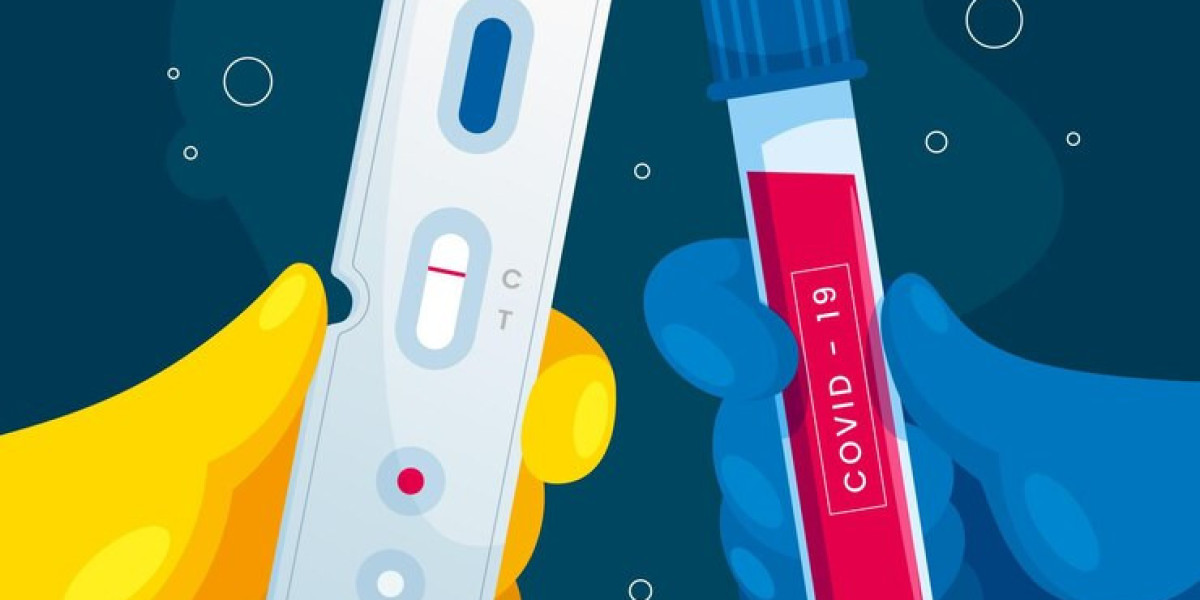The In Vitro Diagnostics (IVD) market is a critical segment of the global healthcare industry, encompassing diagnostic tests performed outside the human body to detect diseases, monitor health conditions, and guide treatment decisions. The market has witnessed significant growth due to advancements in diagnostic technology, increasing disease prevalence, and rising demand for early disease detection. This article provides a comprehensive overview of the IVD market, including its key drivers, challenges, emerging trends, and future outlook.
1. Understanding the In Vitro Diagnostics Market
IVD refers to medical tests conducted on samples such as blood, urine, and tissue to diagnose diseases and monitor patients' health. These tests are performed using various techniques, including:
- Molecular Diagnostics: Identifies genetic mutations and infections using PCR and next-generation sequencing (NGS).
- Immunoassays: Detects diseases through antigen-antibody interactions.
- Clinical Chemistry: Measures biochemical markers in bodily fluids.
- Microbiology Testing: Identifies infectious diseases using cultures and rapid tests.
With the increasing shift towards precision medicine and personalized healthcare, the IVD market is expanding rapidly.
2. Key Drivers of Market Growth
Several factors are fueling the growth of the IVD industry:
- Rising Prevalence of Chronic and Infectious Diseases: Conditions such as diabetes, cardiovascular diseases, cancer, and infectious diseases like COVID-19 are driving demand for accurate diagnostic tests.
- Advancements in Diagnostic Technologies: AI-driven diagnostics, automation, and next-generation sequencing are improving efficiency and accuracy.
- Growing Adoption of Point-of-Care Testing (POCT): The demand for rapid, on-site diagnostic solutions is increasing in hospitals, clinics, and home care settings.
- Increasing Demand for Personalized Medicine: Companion diagnostics are being developed to match treatments to individual genetic profiles.
- Aging Population and Healthcare Awareness: The rise in elderly populations and increased health awareness are boosting the need for early disease detection.
3. Challenges and Market Restraints
Despite rapid advancements, the IVD market faces several challenges:
- Regulatory Complexity: Stringent approval processes and evolving compliance requirements create hurdles for new product launches.
- High Cost of Advanced Diagnostics: Expensive diagnostic tests limit accessibility, particularly in developing regions.
- Shortage of Skilled Professionals: The need for trained professionals in laboratories and diagnostic centers remains a significant challenge.
- Data Privacy and Cybersecurity Risks: The increasing digitization of healthcare raises concerns about patient data security.
4. Emerging Trends in the IVD Market
- Artificial Intelligence and Machine Learning: AI-powered diagnostics are enhancing accuracy and efficiency in disease detection.
- Home-Based and Self-Testing Solutions: The rise of telehealth and digital diagnostics is enabling patients to conduct tests from home.
- Liquid Biopsy in Cancer Diagnostics: Non-invasive cancer screening through circulating tumor DNA (ctDNA) analysis is gaining momentum.
- Sustainability and Green Diagnostics: Companies are adopting eco-friendly practices to reduce environmental impact.
- Integration of Digital Health and Big Data: The use of data analytics in diagnostics is improving patient management and treatment planning.
5. Regional Market Overview
- North America: The largest IVD market, driven by advanced healthcare infrastructure and strong R&D investments.
- Europe: A growing market with increasing focus on regulatory harmonization and personalized medicine.
- Asia-Pacific: The fastest-growing region due to rising healthcare investments, population growth, and increasing disease burden.
- Latin America & Middle East/Africa: Emerging markets with improving access to diagnostic solutions and government healthcare initiatives.
6. Competitive Landscape and Key Players
The IVD market is highly competitive, with leading players focusing on innovation, mergers, and acquisitions to expand their market share. Major companies include:
- Roche Diagnostics – Leader in molecular diagnostics and personalized medicine.
- Abbott Laboratories – Known for its wide range of rapid testing solutions.
- Siemens Healthineers – Focuses on AI-driven diagnostics and automation.
- Thermo Fisher Scientific – Strong presence in molecular and clinical diagnostics.
- Danaher Corporation – Specializes in laboratory automation and immunodiagnostics.
7. Future Outlook and Opportunities
The IVD market is expected to grow significantly in the coming years, driven by:
- Expansion in Emerging Markets: Increasing access to healthcare and diagnostic facilities in developing regions.
- Advancements in AI and Automation: Continued integration of AI to enhance diagnostic speed and accuracy.
- Focus on Preventive Healthcare: Growing emphasis on early detection and disease prevention.
- Regulatory Advancements and Faster Approvals: Streamlined regulatory processes to accelerate the availability of new diagnostics.
Conclusion
The In Vitro Diagnostics market is undergoing rapid transformation, fueled by technological innovations, increasing disease prevalence, and the demand for personalized medicine. While challenges such as regulatory compliance and cost barriers persist, emerging trends in AI, home-based diagnostics, and digital health present significant opportunities. As the industry continues to evolve, companies that invest in innovation and adapt to changing healthcare needs will thrive in the competitive IVD landscape.









